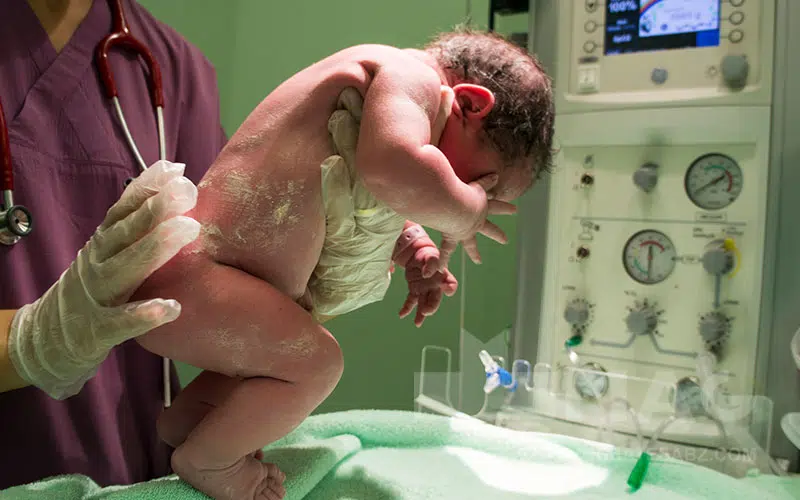
1403/05/10 11:22:37
Preparation for childbirth and the process of childbirth
What preparations are needed before childbirth?
Preparation for childbirth: Planning helps the pregnant woman and her partner get ready to face labor and eases their concerns about it. It’s important to decide in advance on the type of delivery and pain management methods with the help of a childbirth preparation class instructor.
It's best to start getting the necessary items for the pregnant woman and her baby ready by the end of the seventh month (week 28) for the hospital visit.
Essential items for the mother:
- Underwear
- Personal items needed by the mother (makeup, hairbrush, etc.)
- Medical records related to the current pregnancy and insurance booklet
- Identification documents for the mother and her partner

Essential Items for a Newborn:
Baby blanket
Diapers
Baby carrier
Season-appropriate clothing
Labor Process:
A pregnant woman recognizes the onset of labor when contractions start, but these pains do not necessarily indicate that labor is imminent since sometimes these pains are not true labor pains.
False Labor:
- Irregular contractions
- No decrease in the time between contractions
- Pain mainly in the lower abdomen
- Intensity of contractions does not change
True Labor:
- Regular contractions
- Decrease in the time between contractions
- Pain in the lower back and abdomen
- Increasing intensity of contractions
- Presence of blood-stained mucus discharge is another sign that indicates a visit to the hospital is necessary.
Note: If there is a history of surgery on the uterus, immediate hospital admission should occur at the onset of labor symptoms.
Labor pains are the contractions of the uterus that lead to the dilation and softening of the cervix, followed by the expulsion of the baby and placenta, which occurs in three stages.
Stage One: The onset of true labor pains until complete dilation of the cervix.
Stage Two: From complete cervical dilation until the full delivery of the baby.
Stage Three: The complete expulsion of the placenta and membranes.
Stage One:
The uterine contractions become regular, gradually decreasing the interval between them and increasing the intensity of each contraction, making the cervix gradually soften and open. The cervix must open 10 centimeters for the baby’s head to pass through. Hospital admission happens when the cervix is at least 4 centimeters dilated. If the cervix is dilated to the required extent, the patient is admitted, and a medical record is created.
Changing into clean clothing occurs in the labor or delivery room.
Taking a medical history – checking for past illnesses – monitoring symptoms and performing necessary tests.
Listening to the fetal heartbeat and checking fetal movements.
Internal examination.
Placing an IV and administering fluids if needed.
As the cervix softens and opens, the baby's head descends into the birth canal and moves toward the vaginal opening.
Typically, the baby enters the birth canal headfirst.
To reduce pressure on the lower back vertebrae, the mother should position herself lying on her side, squatting, or on all fours.
Once the cervix is fully dilated, the second stage of labor begins. The obstetrician guides the mother. The fetal heartbeat is monitored. As the baby’s head descends, the mother feels the urge to push and actively participates in the labor process.
After the head is out, the shoulders are delivered with the next contraction, and the rest of the body follows naturally.
It's worth mentioning that, as decided by the obstetrician, a small incision may be made in the perineal area with local anesthesia to facilitate the baby's head's delivery, known as an episiotomy.
After the placenta and baby are delivered, the episiotomy is repaired, using materials that are absorbable and do not require suturing.
In the first hour after delivery, the following must be done:
- Monitoring vital signs
- Fundal massage from the abdomen
- Administering medication
- Examining the newborn

